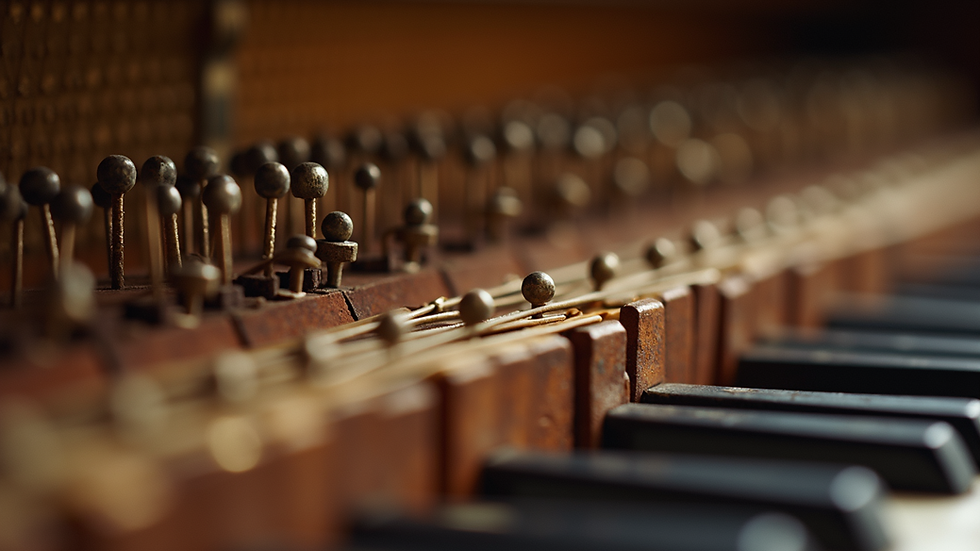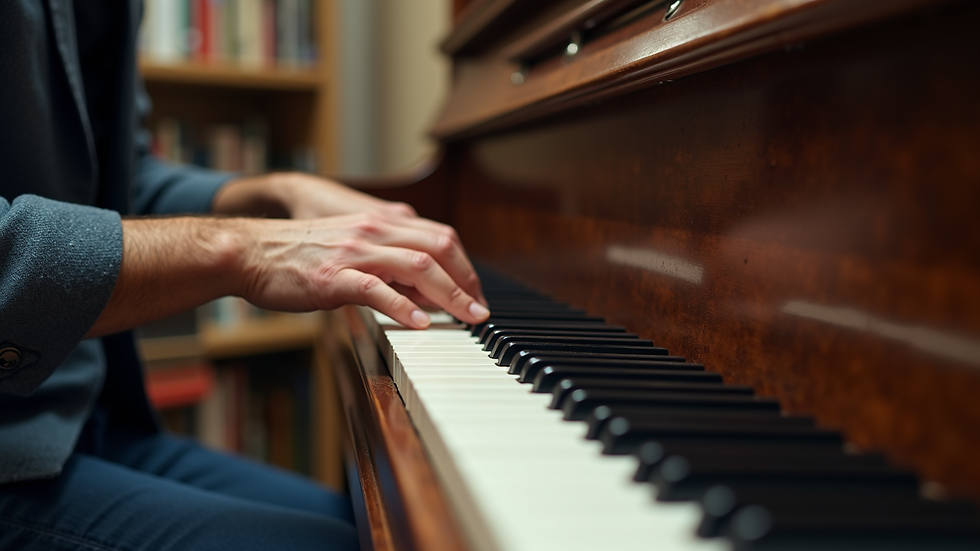Maintaining Your Piano: Why Regular Tuning Matters
- Amos Littrel
- Oct 16
- 4 min read
Owning a piano is a rewarding experience that brings music and joy into your home. However, to keep your instrument sounding its best, regular maintenance is essential. One of the most important aspects of piano care is tuning. Over time, pianos naturally go out of tune due to environmental factors and regular use. This article explores why local piano tuning is crucial, how often you should tune your piano, the costs involved, and tips for finding the right professional to keep your piano in perfect harmony.
The Importance of Local Piano Tuning
Pianos are complex instruments with thousands of parts working together to produce beautiful sound. The strings inside a piano are under immense tension, and even slight changes in temperature or humidity can cause them to stretch or contract. This leads to the piano going out of tune.
Regular local piano tuning ensures that your instrument maintains its intended pitch and sound quality. When a piano is in tune, it produces clear, harmonious notes that enhance your playing experience. Conversely, an out-of-tune piano can sound unpleasant and discourage practice or performance.
Local piano tuning also helps preserve the longevity of your instrument. When strings are not properly tensioned, it can put unnecessary strain on the piano’s frame and soundboard, potentially causing damage over time. A professional tuner will also inspect your piano for any mechanical issues during the tuning process, helping to catch problems early.

Close-up view of piano strings and tuning pins
How Often Should You Schedule Local Piano Tuning?
The frequency of piano tuning depends on several factors including the piano’s age, usage, and the environment where it is kept. As a general rule:
New pianos should be tuned more frequently, about 3 to 4 times in the first year. This is because new strings stretch and settle.
Regularly used pianos in stable environments should be tuned at least twice a year.
Pianos in fluctuating climates or homes with inconsistent humidity may require tuning every 3 to 4 months.
If you play your piano daily or use it for performances, more frequent tuning is recommended to maintain optimal sound quality. On the other hand, pianos that are rarely played might still need annual tuning to prevent deterioration.
Maintaining a consistent tuning schedule helps your piano stay in good condition and ensures that it sounds its best whenever you play.

Eye-level view of a piano tuner adjusting tuning pins
How Much Will It Cost to Tune a Piano?
Understanding the cost of piano tuning can help you plan your maintenance budget. The price varies depending on your location, the condition of the piano, and the experience of the tuner. On average, you can expect to pay between $100 and $200 for a standard tuning session.
Additional factors that may affect the cost include:
Piano type: Grand pianos often cost more to tune than upright pianos due to their size and complexity.
Condition: If your piano has not been tuned for a long time, it may require a pitch raise or multiple tuning sessions, which can increase the price.
Travel fees: Some tuners charge extra if they need to travel a long distance.
It is a good idea to get quotes from several local professionals and ask about their experience and services. Remember, choosing a qualified tuner is more important than finding the cheapest option, as proper tuning protects your investment.

High angle view of piano tuning tools on a workbench
Tips for Finding the Best Local Piano Tuning Service
Finding a reliable and skilled piano tuner is key to maintaining your instrument’s sound and condition. Here are some tips to help you find the best local piano tuning service:
Search online: Use search terms like piano tuning near me to find local professionals with good reviews.
Ask for recommendations: Reach out to music teachers, piano stores, or local music schools for trusted tuner referrals.
Check credentials: Look for tuners certified by professional organizations such as the Piano Technicians Guild.
Request a consultation: A good tuner will be happy to discuss your piano’s needs and provide an estimate before starting work.
Read reviews: Customer feedback can give insight into the tuner’s reliability and quality of service.
Regular communication with your tuner can also help you understand your piano’s condition and any additional maintenance it may require.
Maintaining Your Piano Beyond Tuning
While tuning is essential, it is only one part of piano maintenance. To keep your piano in top shape, consider these additional care tips:
Control humidity: Use a humidifier or dehumidifier to maintain a stable environment around your piano. Ideal humidity levels are between 40% and 50%.
Keep it clean: Dust the piano regularly with a soft cloth. Avoid using harsh chemicals on the wood or keys.
Protect from sunlight: Direct sunlight can damage the finish and cause temperature fluctuations.
Schedule regular inspections: Have a professional technician check the piano’s action, pedals, and strings periodically.
Play regularly: Frequent playing helps keep the piano’s parts moving smoothly.
By combining regular tuning with proper care, you can enjoy your piano’s beautiful sound for many years.
Maintaining your piano through regular local piano tuning is an investment in your instrument’s sound quality and longevity. Whether you are a beginner or an experienced player, keeping your piano in tune enhances your musical experience and protects your valuable instrument. If you are searching for trusted professionals, consider looking for piano tuning near me to find expert services in your area.



Comments